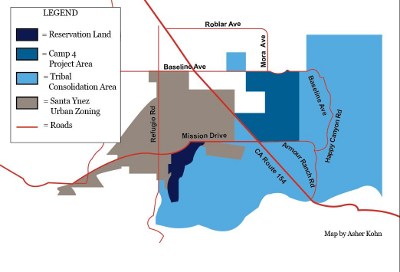A State Lands Commission policy prohibiting development seaward of the most landward historical position of the mean high tide line was an invalid underground regulation because it was not promulgated as a regulation pursuant to the Administrative Procedures Act, the Third District Court of Appeal has ruled.
Contrary to the commission's contention, its policy was not exempt from promulgation under the Administrative Procedures Act (APA) because it did not fit within the "only legally tenable interpretation of a provision of law" exemption. In fact, the court held that the policy was not the only tenable interpretation because the regulation did not account for fluctuations in high tide that fall outside of the historical range.
Establishment of the mean high tide line is crucial to beachfront property owners, because the state owns all lands between the low-water mark and the ordinary high-water mark. Those are tidelands that the State Lands Commission holds in trust for the public.
The commission's policy, wrote Justice George Nicholson, "is potentially both overinclusive, prohibiting development on land that does not now and may never belong to the state, and underinclusive, failing to prohibit development on land that may become state land in the future."
The decision could have implications for coastal development and for public beach access, but it appears unlikely that the ruling will result in a substantial loosening of development regulations.
The court's decision came in a case brought by Thomas and Nancy Bollay. They own a beachfront parcel in unincorporated Santa Barbara County near Carpinteria. Their parcel extends landward from the mean high tide line to rocks that protect a railroad right-of-way on the landward side of the parcel. The Bollays in 1999 filed an application with the county for permission to build a single-family residence on the parcel. The county in turn contacted the commission regarding whether the proposed project would encroach on state tidelands. The commission responded that the proposed project could encroach on state tidelands and, thus, objected to the project.
In 2003, the Bollays submitted a survey to the commission. The survey identified the location of the mean high tide line, which is also called the ordinary high-water mark, and the Bollays attempted to show that their house would not encroach on this mark. This mark is determined by averaging the height of the high tides over approximately 19 years. The commission rejected the survey on the grounds the mean high tide had changed over the years, and cited surveys conducted in 1956 and 1964 as evidence that the entire beach seaward of the railroad right-of-way was seaward of the mean high tide line.
In 2004, the county commenced an investigation into whether it should condemn the Bollays' parcel and seven others along the beach for public purposes. For the county to proceed, the State Lands Commission would have to establish the mean high tide line on the beach. However, the commission did not determine the existing mean high tide line. Instead, the commission issued a report that referred only to the 1964 survey, and which concluded that "it seems unlikely that any of the parcels could be developed in a manner that complied with Coastal Act policies or that conformed to the State Lands Commission's policy that new development be sited landward of the most landward location of the mean high tide line." (The italicized language is the policy that the Bollays challenged as an underground regulation.)
The Bollays first challenged the policy before the Office of Administrative Law (OAL). The OAL determined the policy was a regulation, but did not agree with the Bollays that the regulation was illegal. The OAL determined the policy was exempt from the APA rules requiring a certain process for promulgation of regulations because, the OAL concluded, the policy was the only legally tenable interpretation of the law governing the commission's activities.
The Bollays then sued in Sacramento County Superior Court, where Judge Lloyd Connelly considered only the question of whether the exemption to the promulgation rules applied. He upheld the OAL's determination that the exemption applied. The Bollays appealed.
The unanimous three-judge panel of the Third District agreed with the commission that the policy constituted a regulation. However, the appellate court reversed both the commission's determination and the trial court's ruling as to whether an exemption to the promulgation rules applied.
"Simply put, the Lands Commission's policy is not the only legally tenable interpretation of law because it potentially ‘protects' the public's interest in land that does not now and may never in the future belong to the state," Justice Nicholson wrote. "Furthermore, the current policy is potentially underinclusive as well because the mean high tide line could move further landward than it has ever been. Thus, a policy that ‘protects' only land that is seaward of the most landward historical mean high tide line does not preserve the public's interest in land that may foreseeably become state tidelands."
Thus, the court ruled the Bollays were entitled to the relief sought – a judicial declaration that the commission's policy was invalid because it was not promulgated in accordance with the Administrative Procedures Act.
The Case:
Bollay v. California Office of Administrative Law, No. C063268, 193 Cal. App. 4th 103, 2011 Cal. App. LEXIS 225, 2011 DJDAR 3253. Filed March 1, 2011.
The Lawyers:
For Bollay: Bruce S. Flushman and Wendy L. Manley, Wendel, Rosen, Black & Dean, (510) 834-6600.
For the state: Christiana Tiedemann and Alice Busching Reynolds, attorney general's office, (510) 622-2100.

